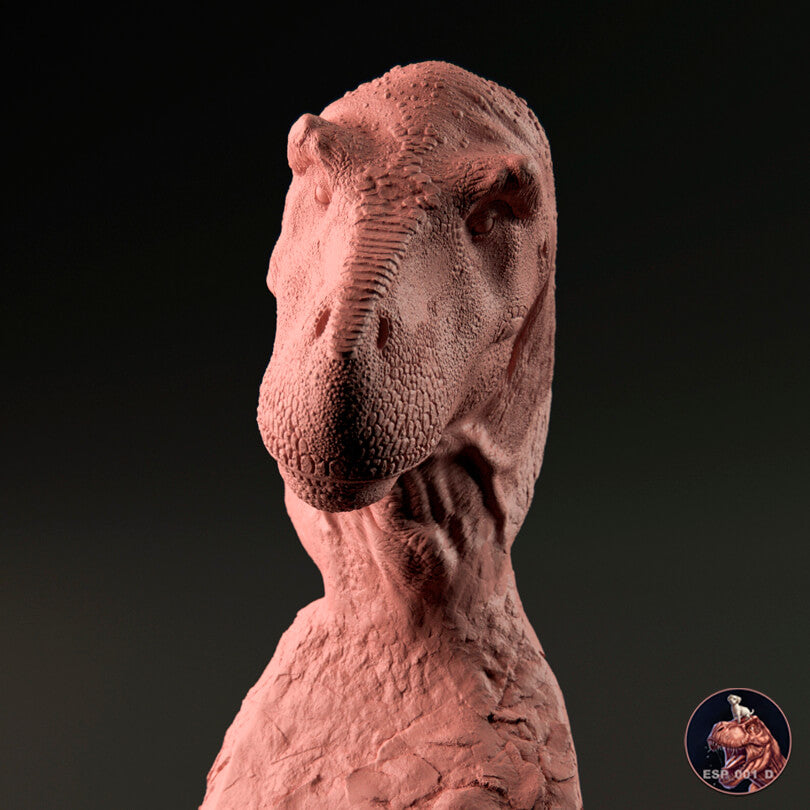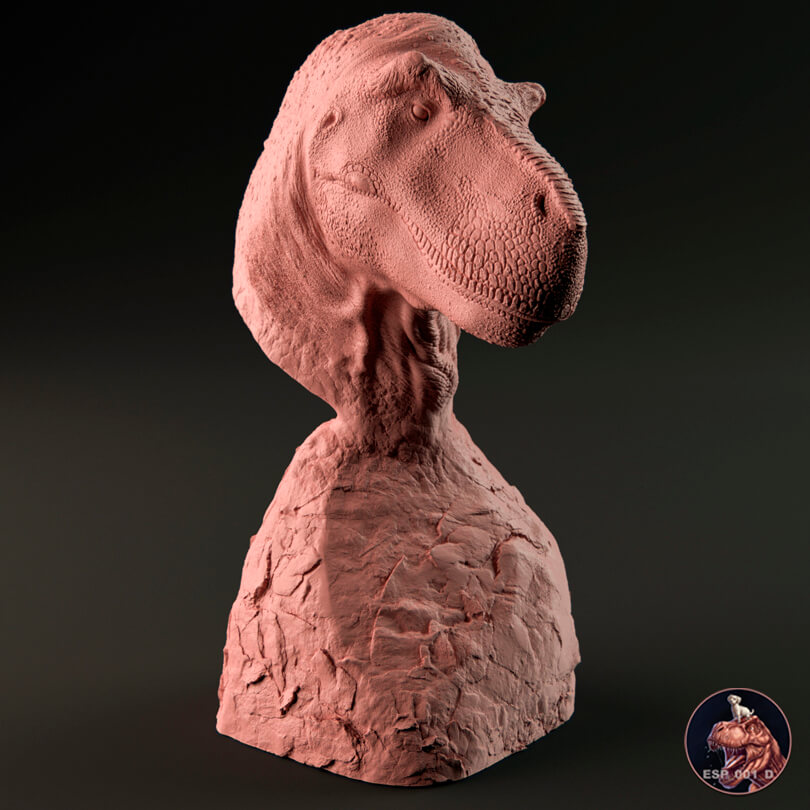

Tyrannosaurus rex
Do you want another scale?
Contact us and we will make it possible!
How will you receive your replica?
In the unprimed and primed variants, you will receive the complete replicas except for the large models, where you will receive an assembly kit.
In the hand-painted variant, the replicas will be delivered complete.
How does the painting service work?
We created a private chat for you where you will have direct communication with our painter , being able to choose your preferred color schemes and follow the hand painting process closely.
Pairs well with

Tyrannosaurus rex
If you have any questions, you are always welcome to contact us. We'll get back to you as soon as possible, within 24 hours on weekdays.
Shipping Information
Visit our shipping policy page to find all the information.
Customer Support
Give us a few details and we’ll offer the best solution. Connect by chat or email.
We are available 24/7.
FAQ’s
Visit our FAQ's page to find answers to common questions.
Contact Us
We'd love to hear from you. We are here to help. Visit our contact page to send us a message.
Product details
Tyrannosaurus (T. rex "Tyrant Lizard") was one of the largest and most ferocious dinosaurs to exist on Earth during the Late Cretaceous Maastrichtian period, approximately 68 to 66 million years ago in what is now North America.
The T-Rex is a carnivorous dinosaur, which could measure up to 12 meters long and weigh around 7 tons. It had a large nasal opening, a short, strong snout, and a jaw with more than 50 razor-sharp teeth, which could measure up to 30 centimeters in length.
The T-Rex's habitat was tropical forests and plains and it fed on other herbivorous dinosaurs, such as Triceratops and Edmontosaurus.
In terms of posture, Tyrannosaurus rex stood upright on its hind legs and had a long, muscular tail that helped it balance. It is thought that it could run at a maximum speed of 40 km/h, although other studies suggest that it was an ambush hunter that attacked its prey from a static position.
It is believed that the T-Rex was a solitary animal, hunting alone and not having many natural predators, however, studies have shown that young T-Rex could be preyed on by other dinosaurs, such as Velociraptor.
Recent paleontological studies have shed new light on the appearance of Tyrannosaurus rex lips. Contrary to what was previously believed, this dinosaur has been found to have thick, fleshy lips, similar to those of a crocodile or hippopotamus. The researchers came to this conclusion after analyzing the jaw fossils of several tyrannosaurs, including one of the most famous and complete specimens, named "Sue." Using CT technology and 3D scanning, they were able to recreate the internal structure of the jaw and determine that there was enough space to accommodate soft, flexible tissue, such as the lips.
In addition, the researchers found evidence of small bony ridges on the surface of the jaw, which could have helped the lips stay in place and protect the jaw while feeding. Microscopic remains of soft tissue and collagen fibers were also found on the surface of some Tyrannosaurus rex teeth, suggesting that the lips may have protected the teeth from wear and tear.
These findings are important because they change our perception of what the Tyrannosaurus rex head looked like and how it fed. Its teeth were previously thought to constantly protrude from its gaping, lipless jaw, as seen in most depictions of the creature. We now know that the lips may have covered the teeth at rest and protected the jaw during chewing, suggesting that Tyrannosaurus rex may have been more careful and selective in its feeding than previously thought. it was full of forests and large grazing areas for herbivores like Triceratops.
Bust replica hyperrealistic and with a high degree of precision.
Approximate measurements of the replica:
- Medium: 71mm H
- Large: 118mm H
Information about aftershocks
Collector's item ; Hyper-realistic replica, highly detailed and with a high degree of scientific precision.
Made to scale, prototyped in resin and with a scenic base in most of the models offered. If you like miniatures, both for collecting and for painting, we offer you a wide variety of scale replicas; All of them related to dinosaurs, extinct prehistoric fauna and current fauna.
So if you love dinosaurs and animals as much as we do, this is your favorite store to collect and paint them :)
We are authorized distributors of all the replicas and figures we offer. We use 3D printers with 8K - 14K resolution, and high-quality resins with additives to improve hardness and flexibility, thus offering replicas of impeccable quality.
Different scales will be used to make the replicas (depending on the size of the species), although we are open to making other suggested scales upon request as long as they fit in our printing trays, for which you will have to contact us via email and request the required size.
Replicas are supplied with the option of airbrush priming in dark grey. If you require another colour, please let us know which one you prefer in the box with special instructions for the seller. Without priming, we do not guarantee that the resin will accept paint.
We also offer the option of choosing a professionally painted replica, which is agreed upon throughout its development with the painter, through a private chat available.
Complete replica (one piece): We supply complete replicas in those models that are small, and models that are medium, large or not very bulky, will have the prerogative of being presented as a complete replica or assembly kit as the case may be.
Complete replicas will be supplied separately from their base.
Replica assembly kit: We supply replicas whose models are large, very large or bulky, only with this option.
The indicated replicas (generally composed of base, head, body and tail) will come prepared for the subsequent assembly that will be required by the client, by sanding, putty, adhesive or technique chosen by the client.
All replicas are thoroughly inspected before shipping and will be carefully packaged to prevent damage during transport.
Information about the models
The poses of the models aim to represent each character in the most scientifically viable way, thus revealing the life and customs of prehistoric and modern fauna.
Each character has its own personality and develops in different life scenarios; birth, adolescence and play, hunting, feeding, fighting, courtship, death and many other scenes from their daily life, always from the creative perspective of their designers.
Handmade
All orders are individually prepared on the cutter for subsequent prototyping, obtaining a resin part that will require post-processing by manual and ultrasonic cleaning, support removal, ultraviolet curing, labeling and packaging.

We are authorized distributors
We offer both our own physical replicas and those that have been modeled by many of the best 3D designers, in order to offer you the greatest possible variety.
Frequently Asked Questions
If you have any questions about products, orders or shipping, please read our FAQ page to learn more.

